So you want plants that ladybugs love. Well luckily, I’m a really keen gardener too. and I do my best to plant flowers, plants, and other flora and fauna that I know my Ladybugs like. I call them ‘my Ladybugs‘ because the ones in my garden I kind of refer to as my friends.
So now, you can consider a plant of some kind for every week of the year with these 52 choices!
I’ve added all my knowledge and research into one handy reference guide for you. I hope it helps! I like to think of it as ‘Ladybug Companion Planting‘!
What Plants Do Ladybugs Like?
Ladybug’s favorite plants include Nasturtiums, Marigolds, Sunflowers, Calendula, or Dill. Along with places to shade from rain for them to breed, and even hibernate. The best, most natural way to attract Ladybugs is to add flowers and plants that provide the best sources of food and habitat.
That all seems pretty easy right? Stick some aphid-prone plants in and hey presto! But we have to remember there are dynamics at work here.
We’re looking for a balance of enough food… the right kind of food, and an environment to attract pest eaters like Ladybugs, as well as Pollinators. But also ensure we don’t provide so much ‘food’ that your fave plants get overwhelmed!
Here’s how to create a paradise for ladybugs!
Why Should We Attract Ladybugs?
I wrote a previous article that talks about the Importance of Ladybugs to Us and the environment. Plus I also touched on this subject in another one regarding What attracts Ladybugs.
It’s a big subject so I won’t cover it too much here, but I think it’s fair to say there are already too many pollinators and crop-protecting species at risk in the world today. Yet they’re so valuable to our backyards and our agriculture.
Ladybugs are one of the best pest control insects you could have around. They eat lots of types of pests, But even if they only ate aphids, that would almost be reason enough to have them.
Which Plants Attract Ladybugs?
Below you’ll find a really good comprehensive (and quick takeaway) list of plants, flowers, herbs, trees, and even wildflowers that you could… or should consider having in your yard to attract Ladybugs.
Some are better for Breeding, or food sources and some are also good for Hibernating.
So, here’s your quick takeaway list, then we’ll dive into more detail below on each of them too so you know why they’re on the list. And I’ll be sharing some ‘insider information’ on some of them based on my research and experience.
- Angelica
- Alyssum
- Azalea
- Asparagus
- Bachelor’s Button
- Beans
- Birch
- Butterfly Weed
- Bugleweed
- Cacti
- Cassava
- Calendula (Pot Marigold)
- Caraway
- Cilantro
- Coneflowers
- Coriander
- Coreopsis
- Chives
- Cosmos
- Dandelion
- Dill
- Fennel
- Ferns
- Feverfew
- Gardenias
- Garlic
- Geranium
- Grapes
- Honeydew
- Hibiscus
- Juniper
- Marigold
- Mustard
- Melons
- Mint
- Mulberry
- Mustard
- Orchids
- Papaya
- Parsley
- Peas
- Pineapple
- Queen Anne’s Lace
- Roses
- Statice
- Strawberries
- Squash
- Sugarcane
- Sunflower
- Tansy
- Tomatoes
- Wild Carrot
- Yarrow
- Yew
The trick here is to separate out the plants you want to keep pest free and add decoy plants in less significant areas that are more likely to attract pests. Thus leaving your cherished plants clear.
This may seem
Below I’ve added what pests these decoy and other plants will attract, so you can add additional flora and fauna to combat any possible attacks. Some of these may not be appropriate for your Country, climate, or region. But as they say… take what you need and leave the rest.
52 Plants, Herbs, Shrubs, Flowers, and Trees That Attract Ladybugs
You should be able to get most of these locally, but in case you can’t, I’ve added links to the seeds on Amazon where I can, I hope it helps.
Angelica
A plant that is often used as a medicinal ingredient and in the flavoring of gin and some sweet wines. So there’s another reason to include it! Ladybugs like the shelter these plants provide and for laying eggs. [here on amazon]
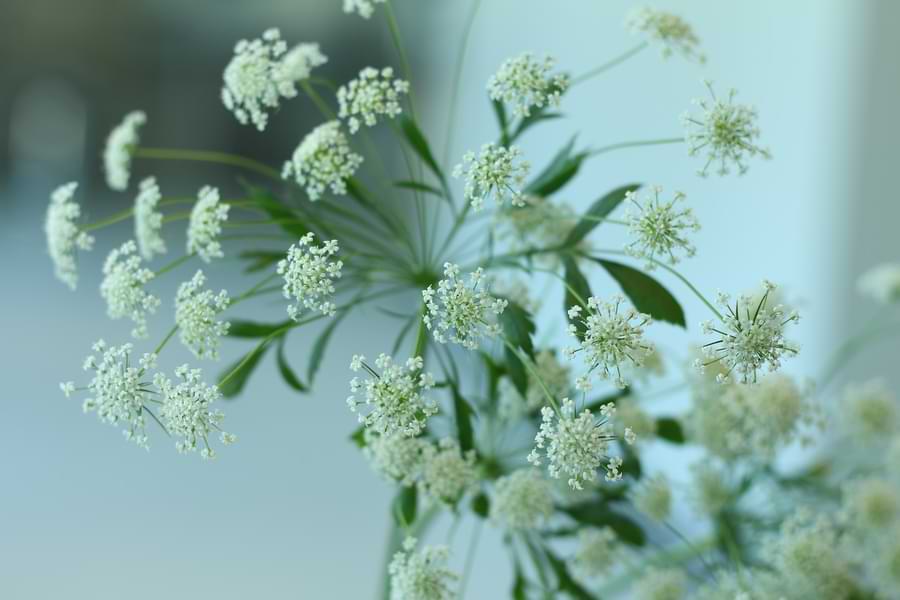
Alyssum
With a strong fragrance, Sweet Alyssum attracts pollination agents, it can also be prone to pests. So attracts Ladybugs. [the most stylish ones I think are here on amazon]
Azalea
Ladybugs can help deter vine Weevil Larva on Azaleas when they can find them during dusk hours. [I like these stunning red ones]
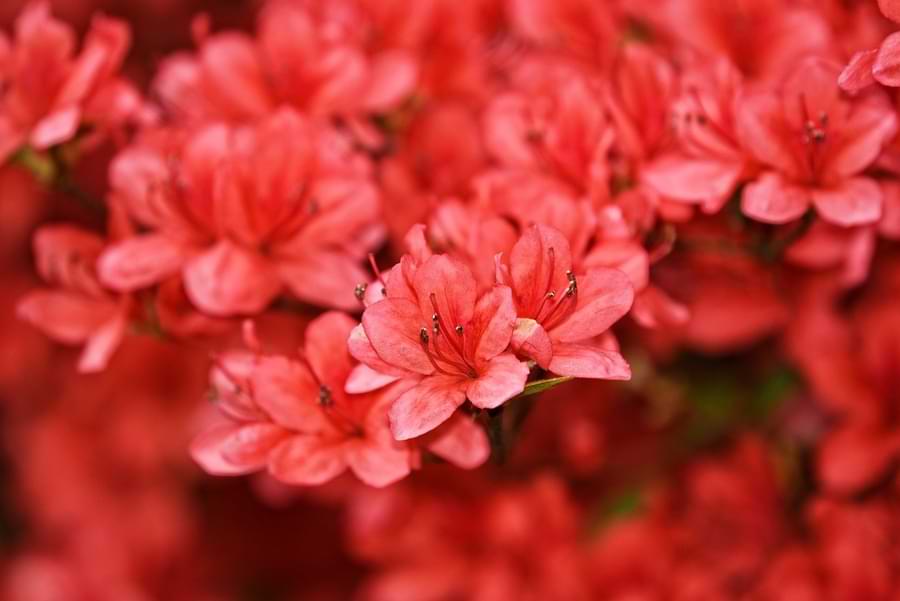
Asparagus
The Asparagus beetle can devastate your asparagus crops. Ladybugs will actively eat asparagus beetle larvae, which are small green to gray grubs. Also planting ferns at the border of your Asparagus plants will deter the Asparagus Beetle and encourage more Ladybugs too. [you might prefer the improved variety on amazon]
Bachelor’s Button
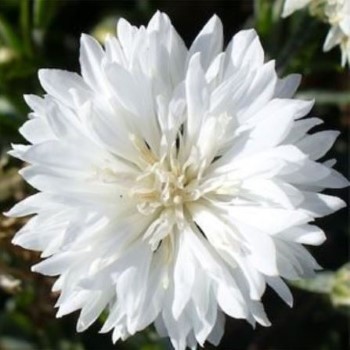
Also known as ‘Cornflower’ or ‘Blue Button’. Native to America, it’s a wildflower that’s easy to grow, easy on the eye, and very little maintenance.
The colorful blue look of this plant is all you need to attract Ladybugs, also available in Pink and White.
Moreover, it’s a pollinating plant, so it’s an additional Ladybug food source. [lots of types but I love this eye-catching pure, bright white snowman variety]
Beans
Beans can be plagued by a number of pests that Ladybugs will predate. Examples include Seedcorn Maggots that invade beans, vine crops, and sweet corn. Leafhoppers and Mexican Bean Beetle. But most of all for Ladybugs, there are Aphids and Spider Mites which they love. [lots of types usually sold locally]
BUT! You might be mistaking Mexican Bean Beetles for Ladybugs.
Birch
You may need a sizeable backyard to plant these. They are prone to Birch leafminers, which are the larvae of the tiny wasps, and black sawflies. Ladybugs can feed on the Larvae when they can find them. [Paper Birch on amazon]
Butterfly Weed
Butterflies love butterfly weed – hence the name. It’s a native American wild plant. Because of its bright-colored flowers and nectar, it will attract a number of pollinators – including Ladybugs. [you could try these on amazon]
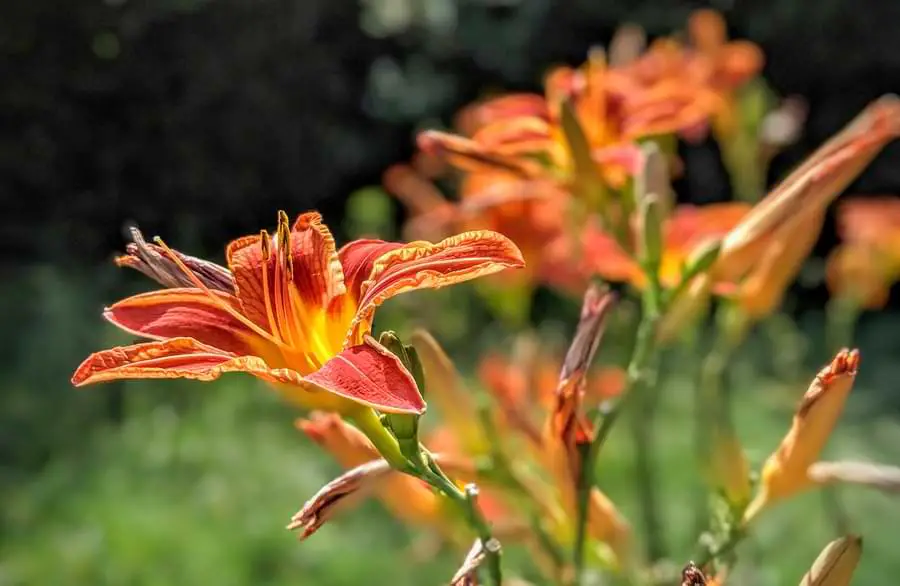
Bugleweed
Not really susceptible to pests, but a good one to have around as again the bright colors attract pollinators. [This is the chocolate chip variety on amazon]
Cacti
I use the word Cacti to mean most succulents, as many can attract Ladybug-loving pests. If you have the option to grow cacti, then it’s a great feeding ground for Ladybugs, they are prone to Mealybugs which Ladybugs love, and Red Spider Mites. [too many varieties to recommend any particular one]
Cassava
A great plant to have which attracts Whiteflies and Mealybugs. Ladybugs will flock to your yard and keep the rest of your plants safe! [standard sort are here on amazon]
Calendula (aka Pot Marigold)
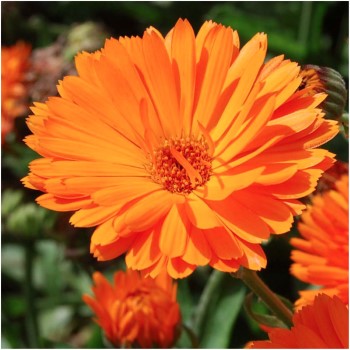
Easy to grow and a great option for Ladybugs to feed and hide in the foliage. They love the pollen from this plant. [the improved orange calendulas – amazon]
Caraway
Prone to cotton aphids, Mealybugs, and Whiteflies. All a favorite of Ladybugs. They’ll keep it safe for you as well as the rest of your yard. [get them locally, or if not they’re here on amazon]
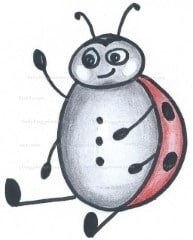
Did You Know
Ladybugs Can Fly for Up to 2 Hours?
Show me more Surprising Ladybug Facts
Carnation
Carnations are prone to Spider Mites, which Ladybugs will happily help keep control of. [lots of varieties and you shouldn’t have much trouble finding them locally]
Cilantro (Coriander)
A sweet and aromatic herb, the smell is ideal for attracting Ladybugs to your garden. [again these are readily available, but here’s the amazon link anyway]
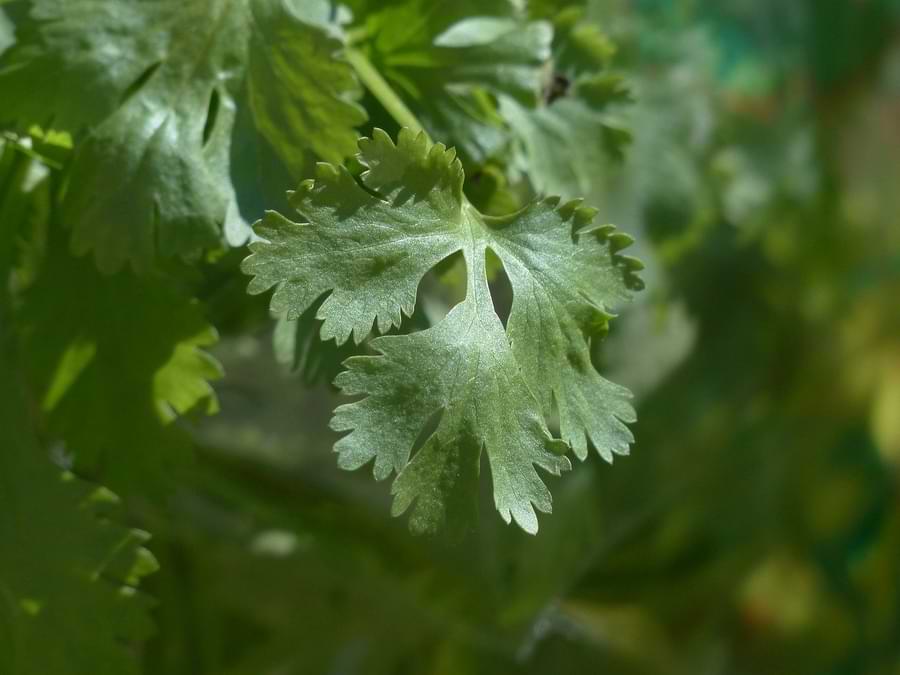
Coneflowers
Silverleaf whitefly and Aphids can get a hold of your Coneflowers and destroy them. You should find this will attract Ladybugs in to help sort them out! [I love these beautiful green envy coneflowers on amazon]
Coreopsis
This should bring in the local Ladybug population as these are prone to all their favorites. Aphids, Whiteflies, and Spider Mites. [loads of varieties, but you might like this Red Dwarf Variety from amazon]
Chives
Chives can attract their fair share of aphids. The Ladybug’s favorite. [pretty easy to get locally]
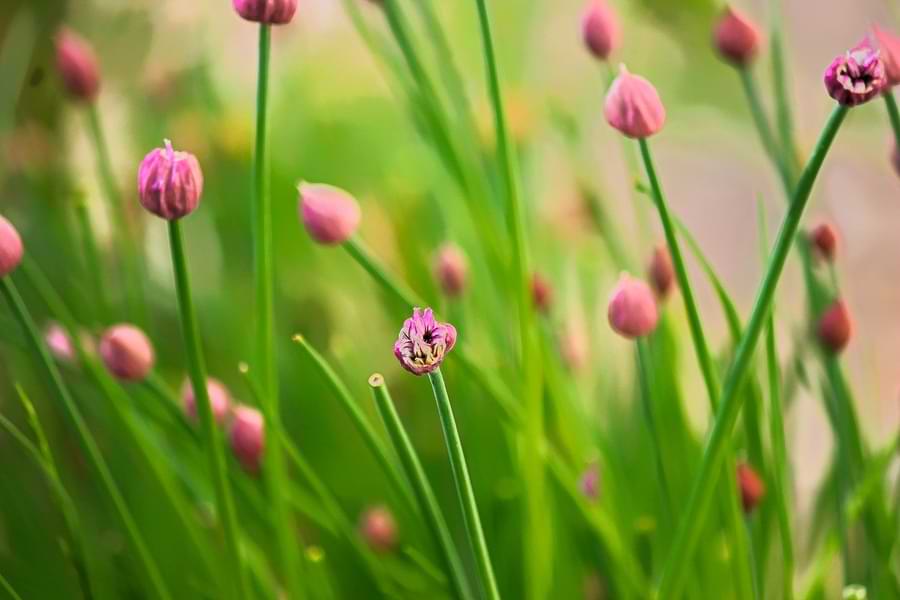
Cosmos
Aphids, Thrips, and Lygus Plant Bugs are known to attack Cosmos. Attracting or releasing Ladybugs can help with these. Note: I’m not sure I’ve seen Ladybugs eating Lygus Plant Bugs. Perhaps you can enlighten me in the comments below? [I sort of fell in love with this cupcake and saucer mix on amazon]
Dandelion
Yes, dandelions are generally considered a weed, but allowing an area for them to thrive can help attract ladybugs. [these are available without trying!]
Dill
Dill not only attracts other pollinators and L
Fennel
Fennel aphid can attack this plant, another that Ladybugs are likely to predate. [locally available]
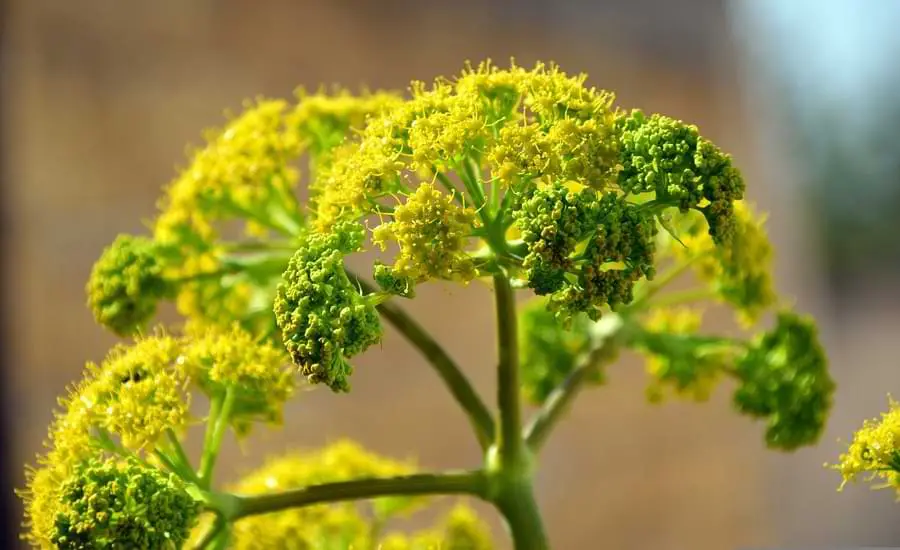
Ferns
Ferns attract bugs of all kinds, plenty of food for Ladybugs here, including Brown Scale, Mealybugs, Aphids, Whitefly, Thrips, and Red Spider Mites. They’re a great way to keep pests off your prize flowers and to attract Ladybugs. [usually always available locally]
Feverfew (Chrysanthemum)
Feverfew is a member of the daisy family and has historically been linked with a traditional herb to be used to prevent migraine. Considered a weed in many places, but as it’s often prone to aphids, leaf and bud eelworms, and leaf-mining flies it’s worth having some around to attract Ladybugs. [they’re here on amazon]
Gardenia
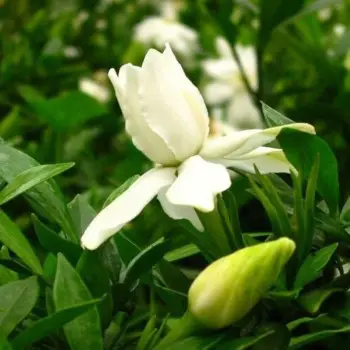
Aphids and Mites love Gardenias, so having these around will being more Ladybugs to help service the rest of your plants.
[beautiful white Qupida here on amazon]
Garlic
The Garlic flowering period can help attract pollinators They can also sometimes attract Onion Thrips and Western Flower Thrips. Ladybugs may take on these depending on if they mind the scent or not. Worth a try. Plus they also help repel mosquitoes and flies. [available locally for sure]
Geranium
Geranium is low maintenance and hardy plant. And one that can help on a number of fronts. As well as attracting Ladybugs with aphids and mites. Scented Geraniums also help in repelling mosquitoes. They also attract Butterflies. [here’s the apple bloom rosebud on amazon]
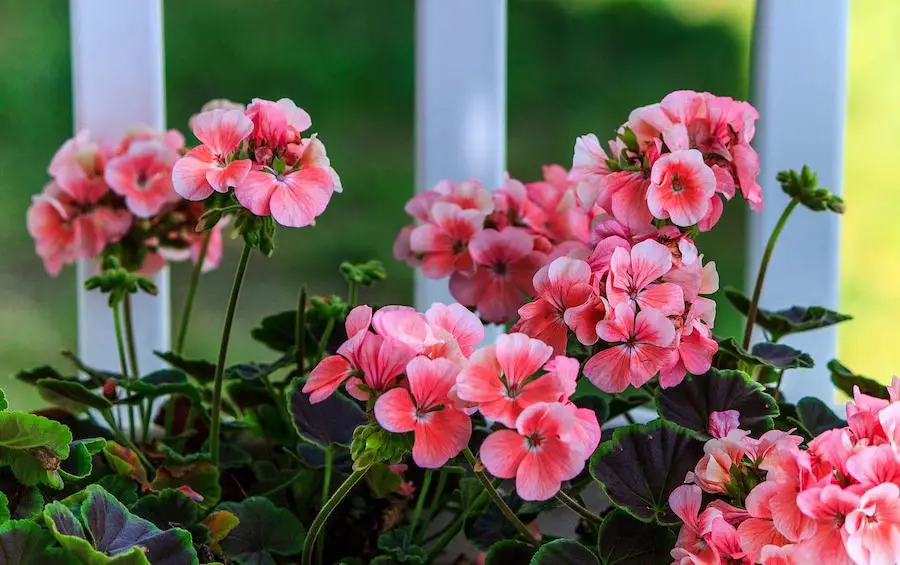
Grapes
Among other pests, grapes can attract Spider Mites, Ladybugs can help deal with those. Be aware though that on occasion Ladybugs quite like to eat grapes. [if you’re able to grow them in your region, then here is an heirloom mix from amazon]
Hibiscus
These are great for Ladybirds, they attract Mealybugs, Thrips, Aphids, and Spider Mites. Veritable Ladybug heaven. [I quite like these rare giants on amazon]. It also makes great tea!

Juniper
Juniper Scale has now spread throughout North America as well as Europe. Ladybugs can possibly benefit from this and come to the rescue of your Junipers! [available locally]
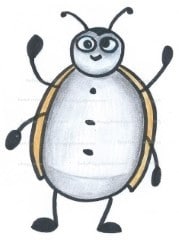
Quick Quiz…
How High Can a Ladybug Fly?
160’, 1600’. 2600’, 3600’
Find the Answer Here
Marigold
Marigolds are a great companion plant for lots of other plants. They’re also more likely to attract Ladybugs as they’re prone to Aphids, Mealybugs, Thrips,
Mustard
Mid to late summer your Mustard plants might well attract Ladybugs, mainly as they can be targeted by Mustard Aphids. And Moths and other insects like to deposit their larva there too. [black mustard on amazon]
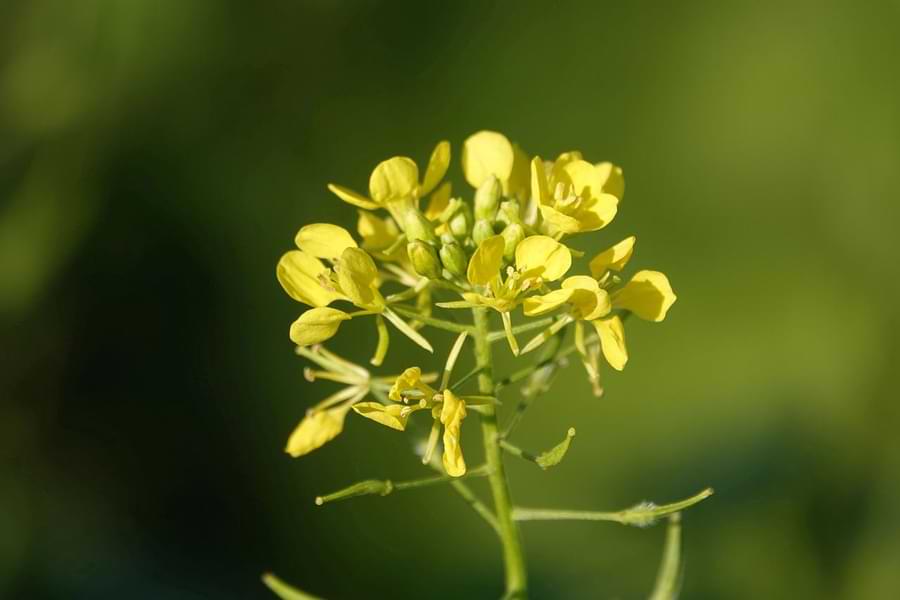
Mint
Prone to Aphids and Spider Mites. Steer clear of strong mints though like peppermint/spearmint as this can actually repel Ladybugs. [I don’t think you’ll need a link for these, they should be available locally]
You could try this Herb Garden Starter Kit from amazon, which has most of these favorite herbs in there
Mulberry
Mulberry tends to be prone to Aphids and Mealybugs. But they’re quite hardy, so planning these will attract Ladybugs and help in other areas of your yard. [here’s the link on amazon]
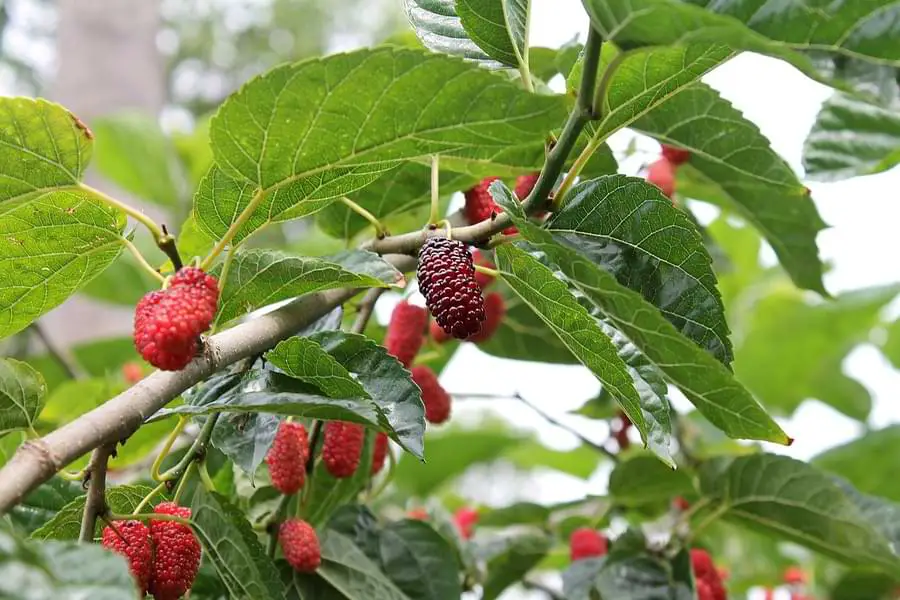
Orchids
Again Aphids and Mealybugs are often found around Orchids. Either plant these to attract Ladybugs or plant some other not-so-important plants for your needs in the garden to attract more ladybugs. [This looked interesting, growing orchids from seed is a book on amazon]
Papaya
These can be prone to the Papaya Mealybug if they’re likely to come in contact with it. Otherwise certainly Aphids might be interested. [dwarf hovey bonsai seeds here on amazon]
Parsley
Parsley is the most common herb, it is a plant that’s really easy to grow. [you should be able to get these locally pretty easily]
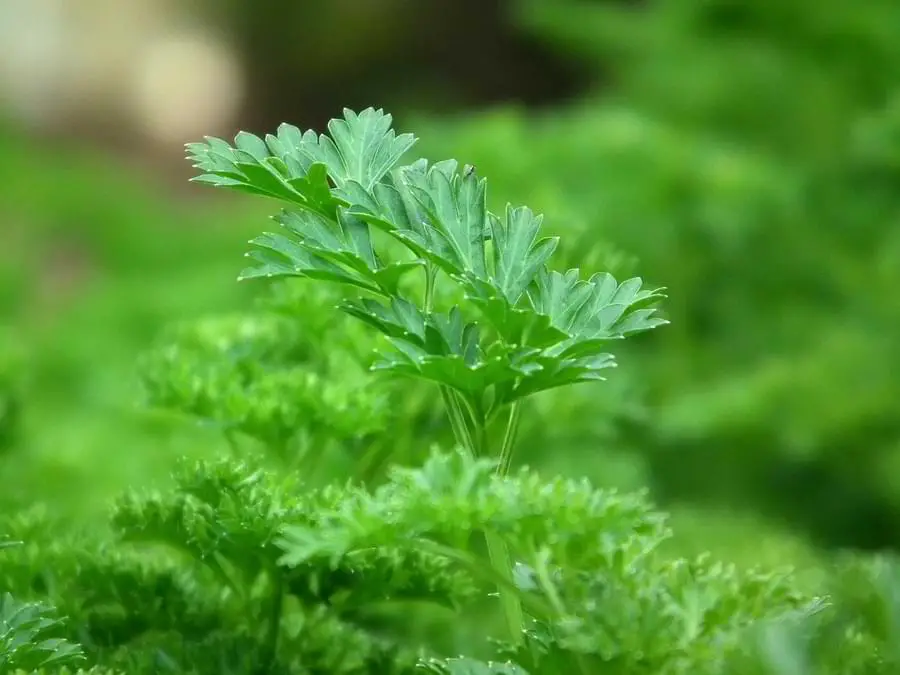
Peas
These attract the Pea aphid – of course! Acyrthosiphon pisum, which feeds on a number of legumes. As well as Field Thrips. [again locally should be fairly easy]
Pineapple
There are lots of insects that attack Pineapple. Among them are some Ladybug favorites such as Mealybugs, Thrips, and Scale insects. [if you can grow these in your region, then they’re here on
Queen Anne’s Lace
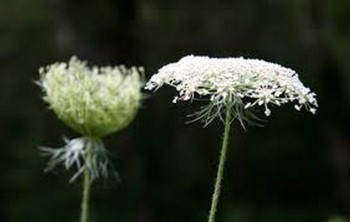
Also called Bishop’s Lace. It’s a beneficial herbaceous plant. Declared a noxious weed by the United States Department of agriculture if it’s identified as Hemlocks Lace.
But Queen Anne’s Lace attracts wasps and bees as well as Ladybugs which can help pests out on your other plants. [If you need it they’re here on amazon]
Radish
Attacked by the usual Aphids. Ladybugs can help to keep these at bay with some decay plants from the list. [here’s a pack of 100 organic non-gmo radish seeds on amazon]
Roses
Roses can be attacked by a whole host of insects. For Ladybugs, this includes Aphids, Thrips, Mites, and Scale. [I’m sure you can get these locally, but if you need them, there are climbing roses here on amazon]
Statice (Sea Lavender)
Also known as Sea Lavender and sporting up to 120 different varieties. They can come in a variety of colors such as purple, pink, white, and yellow. The strong colors attract Ladybugs, but also attract food, like Aphids and Red Spider Mites. [iceberg statice here on amazon]
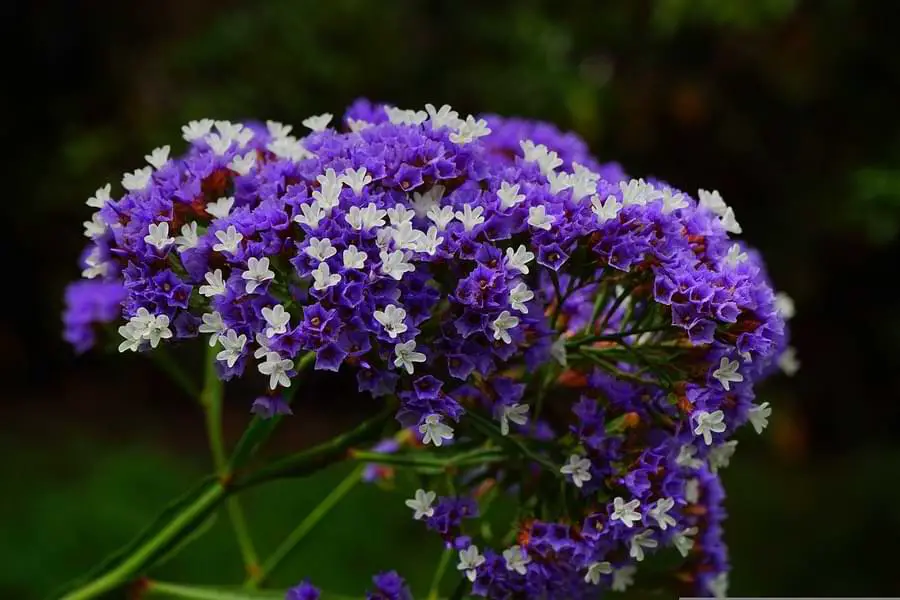
Strawberries
Notorious for being attacked by Strawberry Thrips and Weevils, but with bright colors too the Ladybugs will come looking for prey around your strawberries. Plant some decoys nearby from this list to help too. [here on amazon]
If you’re going to grow strawberries, then you might want to help keep them off the floor – and look more stylish in a Strawberry Planter like this one on Amazon. Just a thought.
Squash (Zucchini/Courgette)
Ladybugs do no eat Squash Bugs as a general rule, but they will possibly eat the eggs which are usually planted on the underside of squash leaves and they may eat the nymphs too. They will however eat any spider mites that are around. [here are the seeds on amazon]

Sugarcane
It’s unlikely many of us will grow sugarcane in our backyards, but if you do then you know that much of the sugarcane crops can be blighted by Spittlebugs, in fact up to 40% can be lost. Ladybugs do eat spittlebugs. [I quite like the look of these Thai Sugar Cane seeds on amazon]
Sunflower
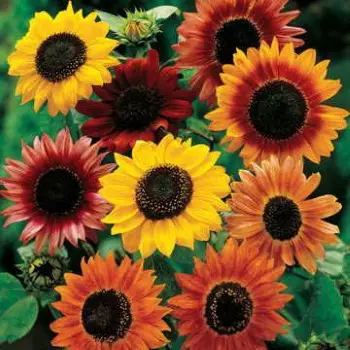
Sunflowers are a great source of Pollen and Nectar for beneficial insects. There are few pests that will eat sunflowers that the Ladybug will predate.
However, their large bright colors will definitely attract more Ladybirds into your garden.
[there’s a large flowered mix here on amazon if you can’t get them nearby]
Tansy
Ladybugs are likely to eat the Tansy Ragwort Flea Beetles as well as any Aphids on Tansies. They’re both soft-bodied insects. Otherwise, Tansy’s are fairly hardy plants but will attract Ladybugs. [here on amazon]
Tomatoes
Ladybugs will target the Flea Beetles and Whiteflies, so try planting some decoy plants nearby which will more likely attract the pests over as well as attract Ladybugs. [you can probably get these locally]
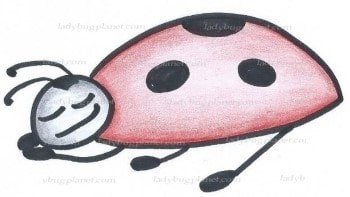
Ever Dream about a Ladybug?
Find out What it Means
Wild Carrot
The Aster Leafhopper is known to target Wild carrots, Ladybugs, Lacewing, and the minute Pirate Bugs that will predate the larvae and eggs of the Aster Leafhopper. Consider also planting decoy plants from this list nearby. [best to try locally for varieties]

Yarrow
Yarrow is fairly pest free. But can be prone to green peach aphids and melon aphids. For this reason, Ladybugs can help keep them at bay. [lots of varieties, but I like these gold yarrow on amazon]
Yew
Fairly hardy, but prone to some yew scale, and some mites. A good place for Ladybugs to find shelter. [here on amazon]
Other Ways to Attract and Keep Ladybugs
- As I’ve mentioned in some of the lists, Ladybugs do also eat pollen and nectar, so it’s worth adding more of them to your garden too.
- Use fewer pesticides and insecticides. Goes without saying, the use of pesticides and insecticides will likely prevent any (or many) Ladybugs from entering your garden. There’s no guarantee you’ll kill all the pests either.
- Ladybugs do drink water, so allow some areas where shallow water is allowed to gather, this will encourage them to stay. And try to keep those areas topped up with water
- Build or add Ladybug Houses for shelter from predators. Much like birdhouses, there’s never any guarantee they’ll use them, but it’s worth providing them all the same.
- Finally, consider buying Ladybugs to bolster the good guys in your garden. If there’s enough to keep them there then they will stay.
- Goes without saying, familiarize yourself with what the Larva and eggs of Ladybugs look like, so you can avoid killing them
Plants That Ladybugs Love – Final Word
There you have it, 52 plants that attract Ladybugs and which can be used as weapons in the fight against pests. As you can tell from this list, there’s a large variety of Flora and Fauna that attract Ladybugs, they’re not that much different from other pollination agents you’d find within your backyard.
It’s about creating a Ladybug paradise in your garden. To protect your favorite flowers, consider planting one of the above as a decoy. Even put down the occasional treat of a little honey with added water.
I hope this list helps you in some way, I’ve added links to some of the seeds for these in case you cannot find them locally.
Also, don’t forget to drop by my resource page for lots of free resources for home and education. As well as a selection of the most stylish Ladybug gifts for Ladybug Lovers like me.
Related Questions
What Plants Do Ladybugs Eat? The majority of Ladybug species (Coccinellidae) eat Soft Bodied Insects, as well as some pollen and Nectar. There are some varieties of Ladybugs that are plant eaters. Most notably they include the distant cousin the Colorado Potato Beetle and the Mexican Bean Beetle.
What Fruits Do Ladybugs Eat? When soft-bodied pests are not available. Ladybugs may eat some nonacidic, sweet fruits. Examples include raisins, grapes, persimmons, pears, peaches, papayas, figs, dates, and bananas. Possible fruits of low acidity like apples, blackberries, blueberries, cherries, nectarines, peaches, pears, plums, and raspberries.

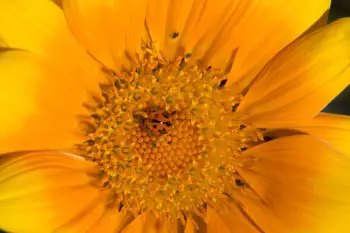

I grow clover fields within my lawn (I have 4, each about 5 feet by 5 feet)) to attract honeybees.
This spring 2020, I have not seen more than 3 bees at one time (it’s May 9), but the ladybugs in them are near 100. And my strawberries have appeared.
This is a great site for ladybug information
I thoroughly enjoyed your site
thank you Jenny 🙂